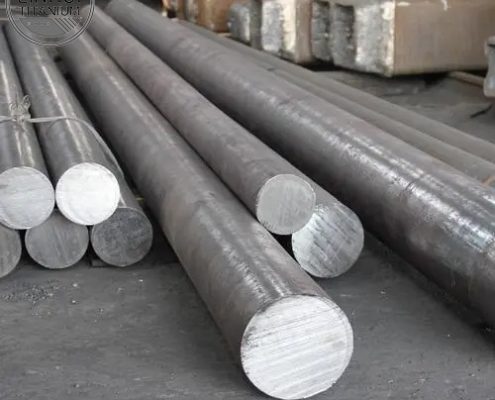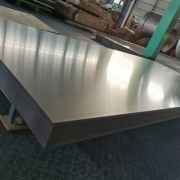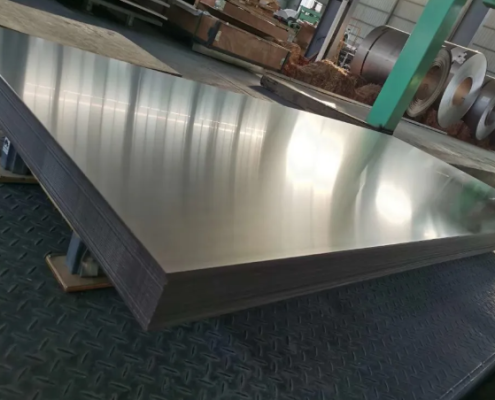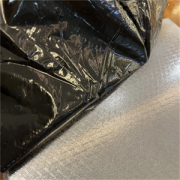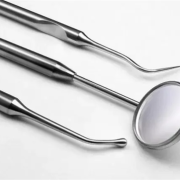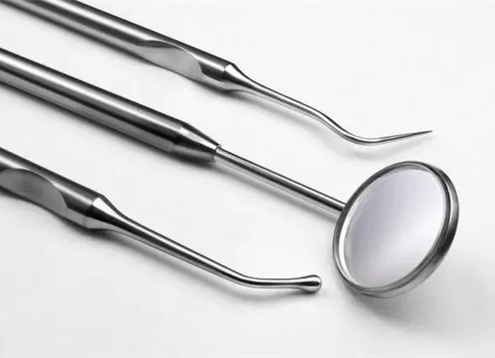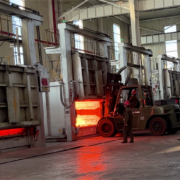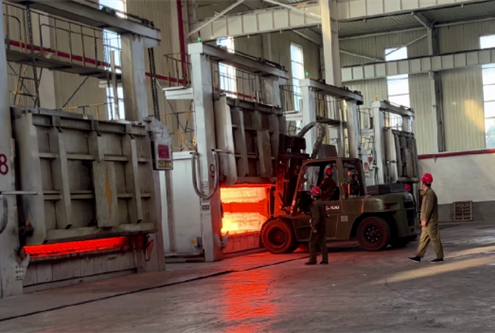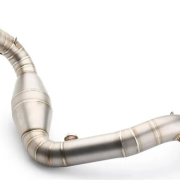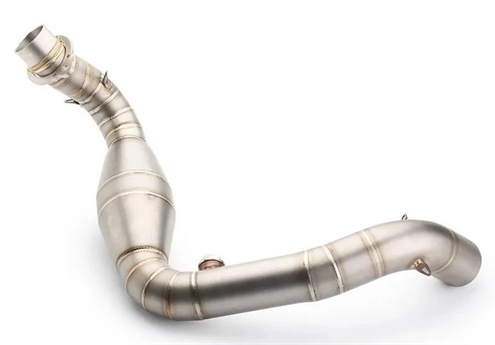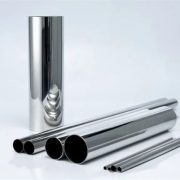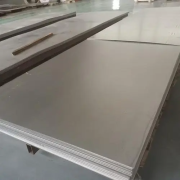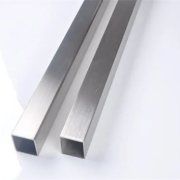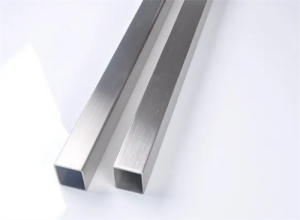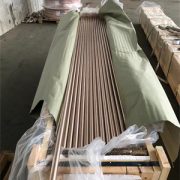Hastelloy C-276, UNS N10276, referred to as C276, is one of the most common nickel-based corrosion-resistant alloys. It is suitable for various chemical industries containing oxidizing and reducing media. The higher molybdenum and chromium content makes the alloy resistant to chlorine. Ion corrosion and tungsten elements further improve corrosion resistance.
Hastelloy C-276 is one of the only materials resistant to corrosion by moist chlorine, hypochlorite, and chlorine dioxide solutions. It has significant resistance to high-concentration chloride solutions such as ferric chloride and copper chloride. Corrosion resistance.
Hastelloy C-276 can be used in the following application areas
1. Pollution control stack liners, ducts, dampers, scrubbers, stack gas reheaters, fans and fan shrouds
2. Flue gas desulfurization system
3. Chemical processing components such as heat exchangers, reaction vessels, evaporators, and delivery pipes
4. Sulfur gas wells
5. Pulp and paper production
6. Waste disposal
7. Pharmaceutical and food processing equipment
There are 9 major precautions when welding Hastelloy C-276:
1. Cleaning before welding
Since dirt and oxides adhere to the surface of Hastelloy, the welding area must be cleaned before welding. The cleaning method can be mechanical cleaning, that is, using an angle grinder to polish the welding area until the metallic luster is exposed. The width of the cleaning should be more than 100mm to ensure that impurities do not enter the welding area.
2. Welding method
When welding, the direct current connection method is generally used for welding. When the direct current connection is used, the temperature of the tungsten grade is low, the allowable current is large, and the loss of the tungsten grade is small. The end of the tungsten grade is ground to 30°, and the head is slightly ground out.
3. Gas protection
Hastelloy C-276 must take measures to minimize the decrease in corrosion resistance of the weld and heat affected zone, such as gas tungsten arc welding (GTAW), gas metal arc welding (GMAW), submerged arc welding, or some other welding method that can minimize the decrease in corrosion resistance of welds and heat-affected zones.
“Special Steel 100 Seconds” considers that the argon gas protection effect is obvious: good protection, concentrated heat, good weld quality, small heat-affected zone, small deformation of the weldment, minimizing the decrease in the corrosion resistance of the weld and heat-affected zone.
4. Practical training
It is best to use mechanical processing or cold processing for welding grooves to ensure that the shape, size, and roughness of the processed surface comply with the drawing requirements or the welding process regulations. Mechanical processing of the groove before welding will cause work hardening, so it is necessary to grind the machined groove before welding. Welding grooves should not have defects such as delamination, folding, cracks, and tears.
Polish the metal surface within the welding groove and the 50mm width on both sides to remove the oxidation color, and clean it with oxide-free solvents such as ethanol, acetone, or propanol to remove grease, moisture, chalk marks, and other contaminants. The painting solvent should be Caiying Clean Use lint-free leather or cellulose sponge. “Special Steel 100 Seconds” reminds us that useless welding materials and harmful substances on workers’ unclean clothes and shoes should be prevented from coming into contact with the workpiece to avoid contamination of the workpiece.
5. Welding material selection
Recommendation: Use ERNiCrMo-4 welding wire and ENiCrMo-4 as the welding rod. This kind of welding wire has excellent corrosion resistance and process performance. Its chemical composition is similar to that of the base metal and its manganese content is higher than that of the base metal. It can improve crack resistance and control porosity during welding. The particularly ultra-low carbon serves to prevent the risk of intergranular corrosion.
6. Preheating and interlayer temperature
Hastelloy welding at room temperature generally does not require preheating. Only when the temperature in the air is below zero or moisture accumulates, the base metal needs to be heated, but the heating temperature only needs to reach 30-40°C.
During the welding process, the weld metal will form a Fe-Cr metal compound, namely σ phase, at high temperature (375-875) for a long time. The σ phase is extremely hard and brittle and is distributed at the grain boundaries, causing The impact toughness of the weld metal to decrease and become embrittled.
When using multi-layer welding, the interlayer temperature must be lower than 90°C to prevent excessive length of 375-875°C from causing σ phase embrittlement.
7. Precautions when welding
To reduce the welding heat input, try to use a small welding current and a fast welding method for welding. In addition, since Hastelloy is easy to crack at the arc closing position, the arc crater must be filled when the arc closes. Before starting arc welding again, the previous arc crater must be polished, and then cleaned with a soft brush before proceeding. Subsequent welding. These two treatments can inhibit the occurrence of thermal cracks.
Welded joints are susceptible to intergranular corrosion. Including intergranular corrosion of welds, “knife corrosion” in the superheated zone close to the fusion line, and intergranular corrosion at the sensitizing temperature of the heat-affected zone.
8. Post-weld heat treatment
However, in very harsh environments, C-276 materials and weldments must undergo solution heat treatment to obtain the best corrosion resistance.
Hastelloy C-276 alloy material solid solution heat treatment, “special steel 100 seconds” is considered to include two processes: (1) heating at 1040~1150; (2) rapid cooling to a black state (around 400) within two minutes, The material treated in this way has good corrosion resistance. Therefore, it is ineffective to only perform stress relief heat treatment on Hastelloy C-276 alloy. Before heat treatment, it is necessary to clean the surface of the alloy from oil stains and other dirt that may produce carbon elements during the heat treatment process.
The surface of Hastelloy C-276 alloy will produce oxides during welding or heat treatment, which will reduce the Cr content in the alloy and affect the corrosion resistance, so the surface must be cleaned. You can use a stainless steel wire brush or grinding wheel, then immerse in a mixture of nitric acid and hydrofluoric acid in an appropriate proportion for pickling, and finally rinse with clean water.
9. Precautions for welding tools
Processing tools should be special cleaning tools for nickel alloys. These tools should be stored separately and marked to prevent confusion with other tools.
Care should be taken to prevent the workpiece from contacting metals with low melting points to avoid the embrittlement of unstable metals caused by the increase in carbon or sulfur. The use of thermometer chalk, ink, and grease should also be restricted during the manufacturing process.
The grinding wheel used for grinding the workpiece should be iron-free, and the adhesive should not be organic resin.
The equipment positioning of pressure welding parts before welding should be performed using the same process as the qualified formal welding, and the positioning weld should finally be melted into the permanent weld. Welding parts are not allowed to be forced to assemble to cause local hardening of the welding parts.
